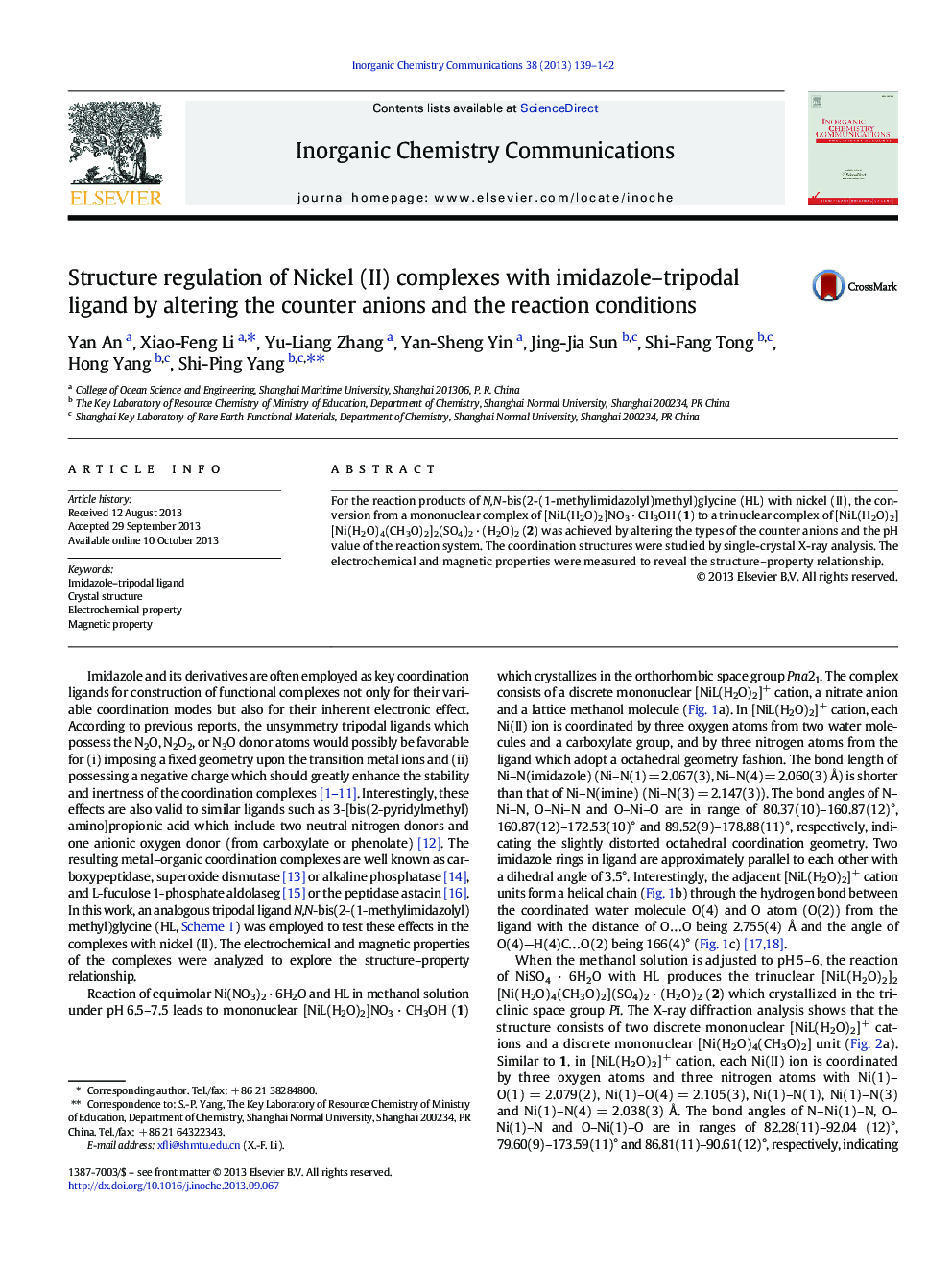| Article ID | Journal | Published Year | Pages | File Type |
|---|---|---|---|---|
| 1301825 | Inorganic Chemistry Communications | 2013 | 4 Pages |
•Two types of Ni(II) complexes were constructed from the imidazole–tripodal ligand•Self-assembly coordinate behaviors of Ni(II) complexes could be controlled•The structure–property relationships of the complexes were explored.
For the reaction products of N,N-bis(2-(1-methylimidazolyl)methyl)glycine (HL) with nickel (II), the conversion from a mononuclear complex of [NiL(H2O)2]NO3 · CH3OH (1) to a trinuclear complex of [NiL(H2O)2][Ni(H2O)4(CH3O)2]2(SO4)2 · (H2O)2 (2) was achieved by altering the types of the counter anions and the pH value of the reaction system. The coordination structures were studied by single-crystal X-ray analysis. The electrochemical and magnetic properties were measured to reveal the structure–property relationship.
Graphical abstractMononuclear and trinuclear complexes of Ni(II) with an unsymmetry tripodal ligand derived from imidazole could be achieved by altering the counter anions and the pH value of the reaction system. The electrochemical and magnetic properties were measured to reveal the structure–property relationship.Figure optionsDownload full-size imageDownload as PowerPoint slide
